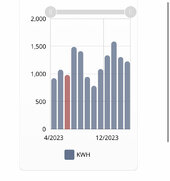tj07161990
New Member
hello all,
Please forgive my ignorance as I learn more everyday.
I am at the early stages and thinking of design ideas for potential whole home solar. My goal is to install panels on roof of my storage building. It’s a 12x20 building. I believe I can fit 12 panels on this roof and it faces directly south. I’m hoping I can squeeze another row and get 16 panels but need to do some measurements..
But I’m a bit worried about the distance. This building is located 220ft from my main electric panel. With this goal of powering my entire home one day, I was thinking I needed a wire than can handle 200amps since I have a 200amp service currently. I wanted to go with a sol ark interested and looking into it a bit more I see the Sol Ark 15k output 67.5amp max. Is a 15k overkill for 12 panels? What about 16? So it seems I only need a cable than can handle this which would be a bit easier to get my hands on. The plan would be to have battery storage, and a Sol-Ark inverter in my exterior building and feed my home.
I want the benefits of reduced energy costs and the peace of mind if we lost power. I’m not sure if it’s best for me to try to grid tie my setup or if it’s better to setup an off grid system than I can switch to for a few hours or more per day? Would it be possible to a grid tie system with sol ark so far away from main panel?
thank you in advance.
Please forgive my ignorance as I learn more everyday.
I am at the early stages and thinking of design ideas for potential whole home solar. My goal is to install panels on roof of my storage building. It’s a 12x20 building. I believe I can fit 12 panels on this roof and it faces directly south. I’m hoping I can squeeze another row and get 16 panels but need to do some measurements..
But I’m a bit worried about the distance. This building is located 220ft from my main electric panel. With this goal of powering my entire home one day, I was thinking I needed a wire than can handle 200amps since I have a 200amp service currently. I wanted to go with a sol ark interested and looking into it a bit more I see the Sol Ark 15k output 67.5amp max. Is a 15k overkill for 12 panels? What about 16? So it seems I only need a cable than can handle this which would be a bit easier to get my hands on. The plan would be to have battery storage, and a Sol-Ark inverter in my exterior building and feed my home.
I want the benefits of reduced energy costs and the peace of mind if we lost power. I’m not sure if it’s best for me to try to grid tie my setup or if it’s better to setup an off grid system than I can switch to for a few hours or more per day? Would it be possible to a grid tie system with sol ark so far away from main panel?
thank you in advance.



